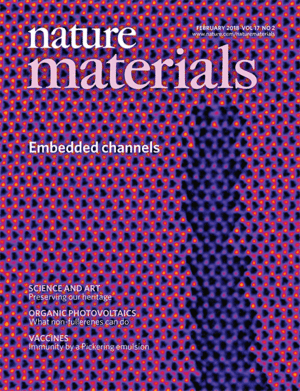 The authors of a highly cited 2016 research letter on a way to improve the efficiency of solar panels have retracted their work following “concerns about the reproducibility.”
The authors of a highly cited 2016 research letter on a way to improve the efficiency of solar panels have retracted their work following “concerns about the reproducibility.”
Given the potential importance of the data, it would be nice to know what exactly went wrong, and why. However, the retraction notice doesn’t provide many details, and doesn’t even specify if the authors did indeed fail to reproduce the data.
The letter, titled “Graded bandgap perovskite solar cells,” was published in Nature Materials by a group out of the University of California at Berkeley and the affiliated Lawrence Berkeley National Laboratory. The 2016 article has been cited 16 times, according to Clarivate Analytics’ Web of Science, earning it the ranking of “highly cited.”
Berkeley heralded the findings in a press release as a “major advance” in the field of solar energy:
Solar cells made from an inexpensive and increasingly popular material called perovskite can more efficiently turn sunlight into electricity using a new technique to sandwich two types of perovskite into a single photovoltaic cell.
The release quotes Onur Ergen, a grad student in physics and first author the paper, as saying the work:
has a great potential to be the cheapest photovoltaic on the market, plugging into any home solar system.
That, um, potential energy isn’t likely to become kinetic anytime soon. As the retraction notice states:
The authors of the study are retracting this Letter due to concerns about the reproducibility of the photovoltaic architecture performance presented, and with the interpretation of the data included in the manuscript and Supplementary Information. This Letter presented solar cells based on two perovskite layers separated by a monolayer of hexagonal boron nitride, deposited on graphene aerogel. The large variability of the current–voltage and spectral response of nominally identical devices and the rapid time evolution of key photovoltaic parameters undermine the authors’ confidence in the conclusions that can be drawn at this stage regarding the performance of these architectures, and they therefore wish to retract the Letter. All the authors agree with the retraction.
The notice implies that the researchers failed to reproduce their data, but doesn’t say it outright. According to an expert who spoke to us (but asked to remain anonymous), readers brought concerns about the validity of the data to the journal, which then relayed them to the authors of the paper.
Luigi Martiradonna, editor of Nature Materials, did not respond to requests for comment about the article. A spokesperson for the publisher said they had nothing to add to the notice.
Alex Zettl, a Berkeley physicist and senior member of the research team, did not respond to our request for comment about what prompted the replication effort.
Like Retraction Watch? You can make a tax-deductible contribution to support our growth, follow us on Twitter, like us on Facebook, add us to your RSS reader, sign up on our homepage for an email every time there’s a new post, or subscribe to our daily digest. If you find a retraction that’s not in our database, you can let us know here. For comments or feedback, email us at [email protected].